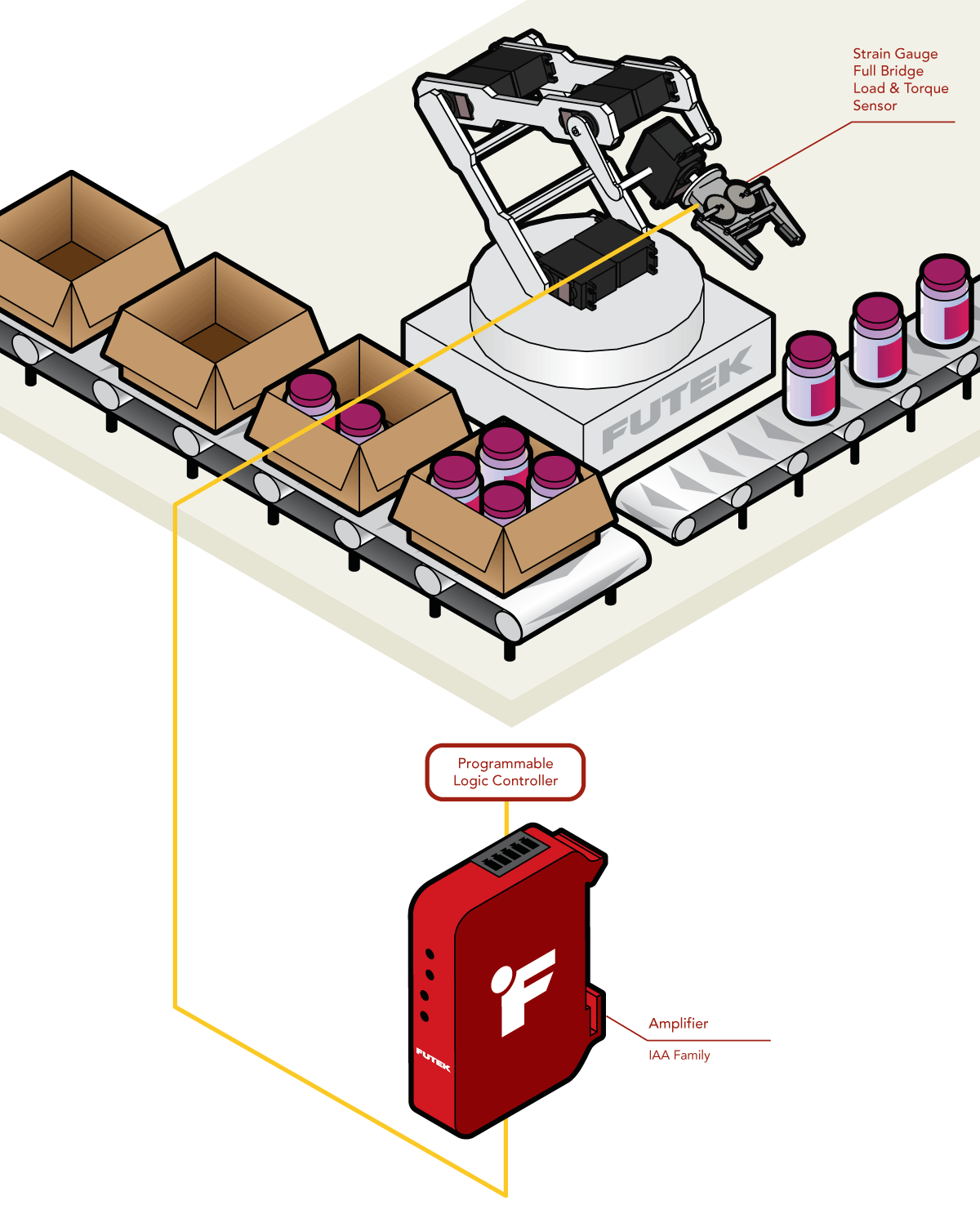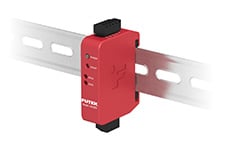Industrial robots make assembly lines more efficient and reliable. Paired with any full-bridge strain-gauge-based sensor, operators can use new IAA amplifiers to send clear, clean signals to logic controllers that govern the assembly line
How it Works
In order to automate an industrial robotic arm, control engineers will program a PLC to specify response triggers.
In the above diagram, a full-bridge strain-gauge-based load and torque sensor resides within the claw of the robotic arm measuring torque and load of an object.
The IAA Series amplifies a mV/V signal coming from the strain-gauge-based sensor.
The output of the IAA amplifier will produce an accurate and low noise signal to the PLC to complete the feedback loop. (Because this application is utilizing a multiple channel sensor, the operations engineer will require one IAA amplifier per channel output.)
Products in Use
A strain-gauge, full-bridge multi-axial sensor that measures torque and load paired with the IAA100 (voltage) or IAA200 (current).
Contact Us
Please Contact Us with questions.
Industrial robots make assembly lines more efficient and reliable. Paired with any full-bridge strain-gauge-based sensor, operators can use new IAA amplifiers to send clear, clean signals to logic controllers that govern the assembly line


